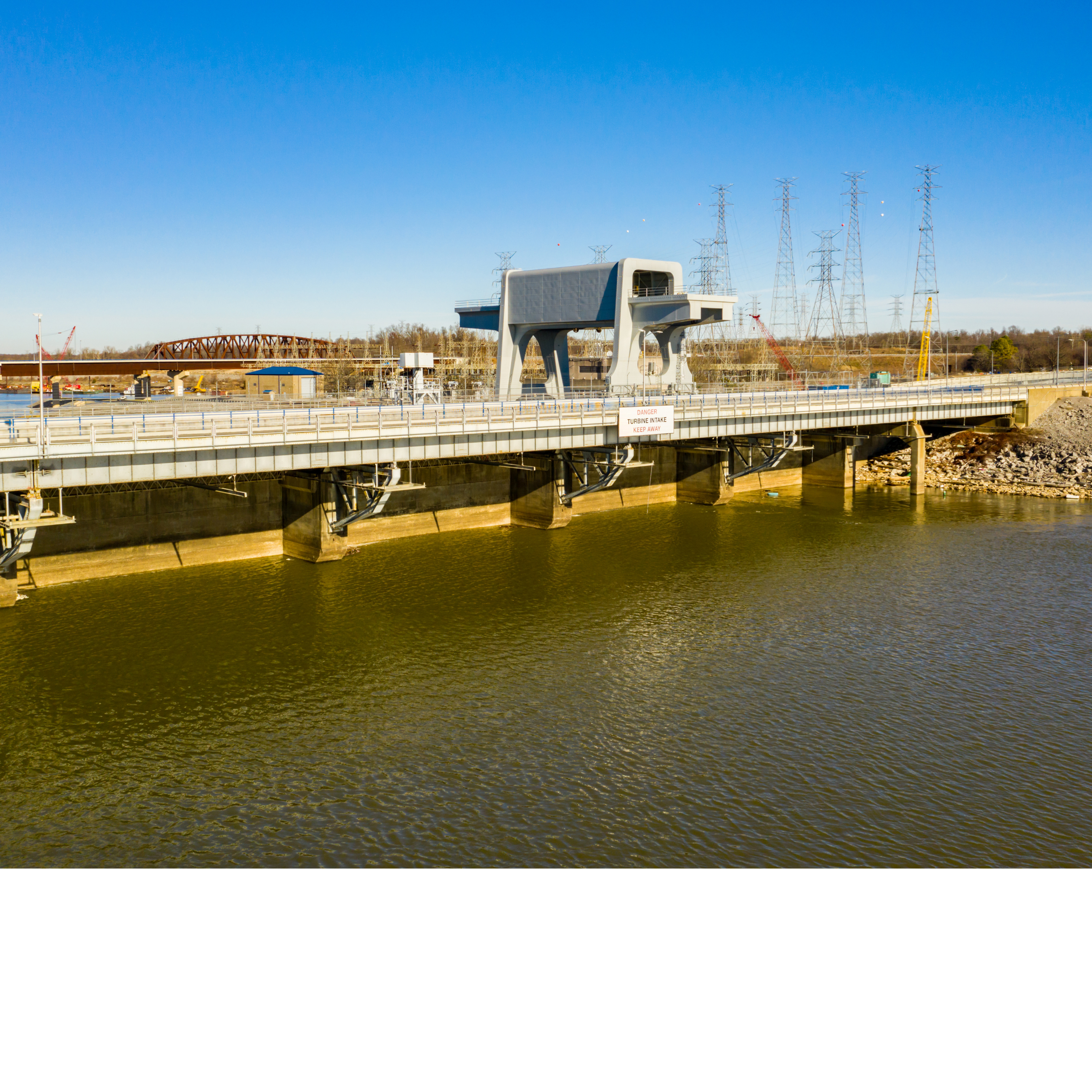Dam Failure

A dam is defined by KRS 151.100 as any artificial barrier that compounds or diverts water and is either 25-feet in height from the downstream toe to the crest of the structure or has a maximum water storage elevation capacity of 50-acre feet or more. Dams serve a multitude of purposes, including human water supply, irrigation, energy generation, recreation, and flood control.
Description of Dam Failure
There are two primary types of dams: embankment and concrete. Embankment dams
are the most common and are constructed using either natural soil or rock or waste material from a mining or milling operation. They are often referred to as “earth-fill” or “rock-fill” based upon which of those two types of
materials is used to compact the dam. Concrete dams are generally categorized as either gravity or buttress dams. Gravity dams rely on the mass of the concrete and friction to resist the water pressure. A buttress dam is a type of gravity dam where the large mass of concrete is reduced and the force of water pressure is “diverted to the dam foundation through vertical or sloping buttresses.”
The Energy and Environment Cabinet, authorized by KRS 151.293 Section 6 to inspect existing structures that meet the above definition of a dam, further notes three classifications of dams:
- High Hazard (C) – Structures located such that failure may cause loss of life or serious damage to houses, industrial or commercial buildings, important public utilities, main highways or major railroads.
- Moderate Hazard (B) – Structures located such that failure may cause significant damage to property and project operation, but loss of human life is not envisioned.
- Low Hazard (A) – Structures located such that failure would cause loss of the structure itself but little or no additional damage to other property.
High- and moderate-hazard dams are inspected every two years. Low-hazard dams are inspected every five years.
Within the BRADD region, there is one High Hazard (C) Dam: Mill Creek MPS 4 in Monroe County.